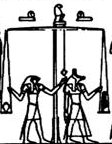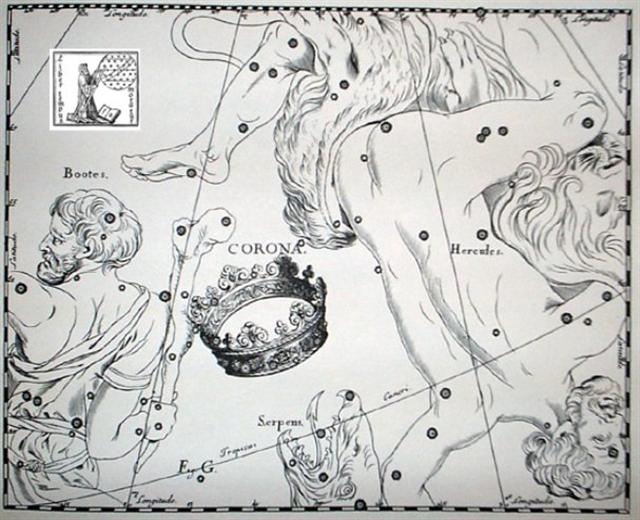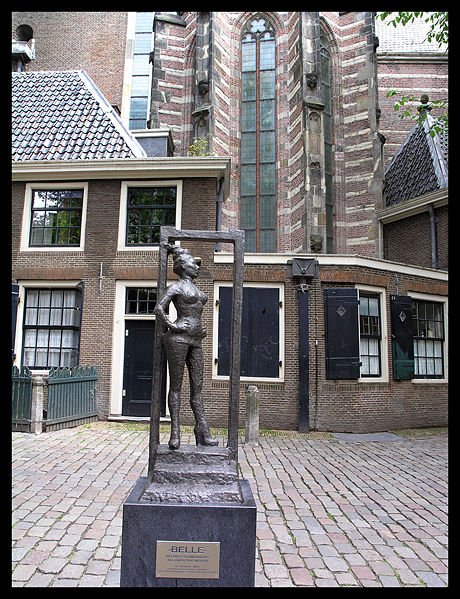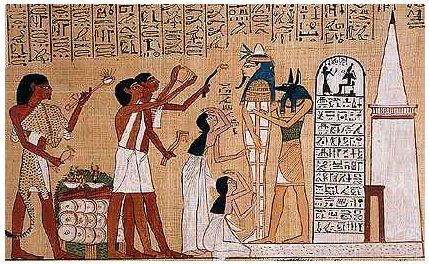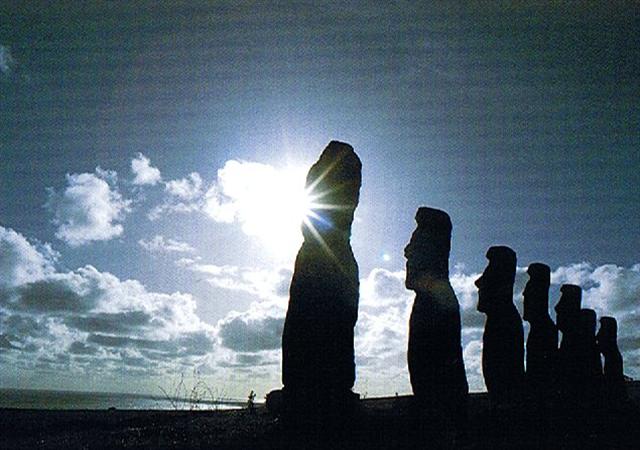6-4. Metoro said the figure looking back in May 15 was kiore. Although it has been stated that the rat (kiore) was the kuhane (dream soul) of the skull (te puoko) - presumably referring to the 11th station Emptiness, i.e. the Rat (Water), in the Chinese calendar - there are other readings which are possible (complementary). ... Up to the present time, fertility spells for fowls have played an important role. Especially effective were the so-called 'chicken skulls' (puoko moa) - that is, the skulls of dead chiefs, often marked by incisions, that were considered a source of mana. Their task is explained as follows: 'The skulls of the chiefs are for the chicken, so that thousands may be born' (te puoko ariki mo te moa, mo topa o te piere) ... As long as the source of mana is kept in the house, the hens are impregnated (he rei te moa i te uha), they lay eggs (he ne'ine'i te uha i te mamari), and the chicks are hatched (he topa te maanga). After a period of time, the beneficial skull has to be removed, because otherwise the hens become exhausted from laying eggs ... The dream soul of the sleeping Hau Maka did find a place on Easter Island and she named it Te Kioe Uri A Hau Maka O Hiva (The Dark Rat of Hau Maka in Hiva). [E:7] ... 1. Hanga Te Pau, the landing site of Ira and his band of explorers, is the natural anchorage for those approaching Vinapu by sea. The remarkable stone fronts of the ahu of Vinapu are all facing the sea. The explorers landed at Hanga Te Pau during the month 'Maro', that is, June ... 2. The cult place of Vinapu is located between the fifth and sixth segment of the dream voyage of Hau Maka. These segments, named 'Te Kioe Uri' (inland from Vinapu) and 'Te Piringa Aniva' (near Hanga Pau Kura) flank Vinapu from both the west and the east. The decoded meaning of the names 'the dark rat' (i.e., the island king as the recipient of gifts) and 'the gathering place of the island population' (for the purpose of presenting the island king with gifts) links them with the month 'Maro', which is June. Thus the last month of the Easter Island year is twice connected with Vinapu. Also, June is the month of summer solstice [a mistake: south of the equator it is winter solstice], which again points to the possibility that the Vinapu complex was used for astronomical purposes. 3. On the 'second list of place names', Hanga Te Pau is called 'the middle (zenith) of the land' (he tini o te kainga). This may refer to a line bisecting the island, but it can just as easily mean the gathering of a great number (of islanders). The plaza (130 x 130 meters) would have been very well suited for this purpose ...
... In China, with Capricornus, Pisces, and a part of Sagittarius, it [Aquarius] constituted the early Serpent, or Turtle, Tien Yuen; and later was known as Hiuen Ying, the Dark Warrior and Hero, or Darkly Flourishing One, the Hiuen Wu, or Hiuen Heaou, of the Han dynasty, which Dupuis gave as Hiven Mao. It was a symbol of the emperor Tchoun Hin, in whose reign was a great deluge; but after the Jesuits came in it became Paou Ping, the Precious Vase. It contained three of the sieu, and headed the list of zodiac signs as the Rat, which in the far East was the ideograph for 'water', and still so remains in the almanacs of Central Asia, Cochin China, and Japan ...
... Another year passed, and a man by the name of Ure Honu went to work in his banana plantation. He went and came to the last part, to the 'head' (i.e., the upper part of the banana plantation), to the end of the banana plantation. The sun was standing just right for Ure Honu to clean out the weeds from the banana plantation. On the first day he hoed the weeds. That went on all day, and then evening came. Suddenly a rat came from the middle of the banana plantation. Ure Honu saw it and ran after it. But it disappeared and he could not catch it. On the second day of hoeing, the same thing happened with the rat. It ran away, and he could not catch it. On the third day, he reached the 'head' of the bananas and finished the work in the plantation. Again the rat ran away, and Ure Honu followed it. It ran and slipped into the hole of a stone. He poked after it, lifted up the stone, and saw that the skull was (in the hole) of the stone. (The rat was) a spirit of the skull (he kuhane o te puoko). Ure Honu was amazed and said, 'How beautiful you are! In the head of the new bananas is a skull, painted with yellow root and with a strip of barkcloth around it.' Ure Honu stayed for a while, (then) he went away and covered the roof of his house in Vai Matā. It was a new house. He took the very large skull, which he had found at the head of the banana plantation, and hung it up in the new house. He tied it up in the framework of the roof (hahanga) and left it hanging there ... The last part -ore could mean (or allude to) 'without', cfr Tahitian 'ore corresponding to kore. He was evidently without a right arm. Likewise was the right arm of Seth seemingly useless (or hanging straight down for some other reason):
... I am taking [he too au] you prisoners [he puru] and I am locking you up in the house of prisoners (hare kopu) for fifty [50, erima te kauatu] years!' Algenib Persei (*50) was 5 days earlier, when in May 10 (→ 5 * 10) the star Gienah (γ Corvi) culminated at 21h. Kopu. Heart, breast, paunch, belly, entrails; kopu mau, stomach; kopu takapau nui, big belly; mamae kopu, bellyache. T Pau., Mgv.: kopu, belly, paunch. Mq.: kopu, opu, belly, stomach, breast. Ta.: opu, belly, intestines, spirit, intelligence. Churchill. Ta.: opu, to rise, of the sun. Ma.: kopu, the morning star. Churchill.
... At Opoa, at one of the last great gatherings of the Hau-pahu-nui, for idolatrous worship, before the arrival of European ships, a strange thing happened during our [the two priests of Porapora, Auna-iti and Vai-au] solemn festivity. Just at the close of the pa'i-atua ceremony, there came a whirlwind which plucked off the head of a tall spreading tamanu tree, named Paruru-mata'i-i-'a'ana (Screen-from-wind-of-aggravating-crime), leaving the bare trunk standing. This was very remarkable, as tamanu wood is very hard and close-grained. Awe struck the hearts of all present. The representatives of each people looked at those of the other in silence for some time, until at last a priest of Opoa named Vaità (Smitten-water) exclaimed, - E homa, eaha ta 'outou e feruri nei? (Friends, upon what are you meditating?) - Te feruri nei i te tapa'o o teie ra'au i motu nei; a'ita te ra'au nei i motu mai te po au'iu'i mai. (We are wondering what the breaking of this tree may be ominous of; such a thing has not happened to our trees from the remotest age), the people replied. Then Vaità, feeling inspired, proceeded to tell the meaning of this strange event… I see before me the meaning of this strange event! There are coming the glorious children of the Trunk (God), who will see these trees here, in Taputapuatea. In person, they differ from us, yet they are the same as we, from the Trunk, and they will possess this land. There will be an end to our present customs, and the sacred birds of sea and land will come to mourn over what this tree that is severed teaches. This unexpected speech amazed the people and sages, and we enquired where such people were to be found. Te haere mai nei na ni'a i te ho'e pahi ama 'ore. (They are coming on a ship without an outrigger), was Vaitàs reply. Then in order to illustrate the subject, Vaità, seeing a large umete (wooden trough) at hand, asked the king to send some men with it and place it balanced with stones in the sea, which was quickly done, and there the umete sat upon the waves with no signs of upsetting amid the applauding shouts of the people ... A ship without outrigger was ama 'ore → without mana. The idea of ki 'ore could perhaps be understood as a person unable to speak, a mute, a 'dead' person (branch) and thus without power. Mutu. 1. Cut short, shortened, amputated; at an end, ceased; anything cut off short; short, brief, quick (rare). Ua muku ko'u lole, my dress is shortened. He kanaka wāwae muku, a person with amputated foot. Huli muku a'ela nā wa'a, the canoes turned sharply. (PPN mutu.) 2. A measure of length from fingertips of one hand to the elbow of the other arm, when both arms are extended to the side. 3. Broken section of a wave or crest. See lala 1. 4. Same as Mumuku, a wind. 5. Thirtieth night of the moon, when it has entirely disappeared (muku). 6. Starboard ends of 'iako (outrigger booms), hence starboard sides of a canoe. Wehewehe. The calendar of the Moon had many ko-kore (ole) nights, nights without tapu, i.e. noa nights. ... Balancing the notion of tapu, though not in perfect dichotomy, is the notion of noa. This pertains to mundane, ordinary objects and functions - household and serving utensils, the acts of preparing and eating food, the many small and common interactions of everyday life. Noa is safe - without preternatural sanction or restricted association, it is demonstrated by the lifting of the condition of tapu from a particular environment or object. A newly built house, ornamented and fresh, would be considered tapu - unsafe, prohibited, raw with spirit and inaccessible to the common touch of people. Making the place noa - 'blessing' it in current terms - would involve ritual, and the crossing of the threshold, usually by a high-born woman.
Her special form of tapu would counter the energies within the house, and thus render it noa, and safe for general entry. Such ritual continues to be observed today; even in the context of an ethnological or fine arts exhibition, these procedures are followed, to appease the ancestral forces who may generate tapu, which imbues the objects with dread or beauty ... Ki. To, towards (a place, a person); after (time); for, in order to... Vanaga. Kî. To say, to speak; word, language; will, wish (verbally expressed): e-hakarogo koe ki te kî o toou matu'a, obey you father's will. Vanaga. 1. In, toward, to, for, at; ki ra, there; ki ra hoki, exactly there; ki aho, outside; ki roto, within, into, inside, among. 2. In order that. 3. To say, to speak, to chat, to pronounce, to respond; argument, conversation, description, doctrine, expression, word, relation; ki veveveve, voluble; ki vaiapuga, nonsense, to speak much and say nothing; ki ihoiho, to speak forcefully. Churchill.
... On the late afternoon of the June solstice, towards sunset, we reached Ahu Akivi near the centre of the western side of Easter Island. This is an inland site, 3 kilometers from the coast. Like Ahu Nau Nau at Anakena, it has seven Moai, but in this case none of them have topknots and, uniquely, all face west towards the sea - which is clearly visible from the high point on which they stand. There is a curious tradition concerning these grizzled, otherworldly statues, solemn and powerful, with their blank, aloof eye-sockets gazing out over the limitless ocean. Like most of the other Moai of Easter Island the local belief is that they died, long ago, at the time when mana - magic - supposedly fled from the island never to return. However, in common with only a very few of the other Moai, it is believed that these particular statues still have the power, twice a year, to transform themselves into aringa ora - literally 'living faces' - a concept startingly similar to the ancient Egyptian notion that statues became 'living images' (sheshep ankh) after undergoing the ceremony of the 'opening of the mouth and the eyes'. Statues at Angkor were likewise considered to be lifeless until their eyes had been symbolically 'opened'. The great stone Moai of Easter Island were at one time equipped with beautiful inlaid eyes of white coral and red scoria. In a number of cases - though not at Ahu Akivi - sufficient fragments have been found to make restoration possible, showing that the figures originally gazed up at an angle towards the sky. It is therefore easy to guess why this island was once called Mata-Ki-Te-Rangi, 'Eyes Looking at Heaven'. On a moonlit night its hundreds of 'living' statues scanning the stars with glowing coral eyes would have seemed like mythic astronomers peering into the cosmos. And in the heat of the day those same eyes would have tracked the path of the sun, which the ancient Egyptians called the 'Path of Horus' or the 'Path of Ra'. This was also the 'path' pursued by the Akhu Shemsu Hor, the 'Followers of Horus', for whom the exclamation Ankh'Hor - 'the god Horus Lives' - would have been an everyday usage. The principal astronomical alignments of the great temple of Angkor Wat in Cambodia are towards sunrise on the December solstice and sunrise on the March equinox - respectively midwinter and the beginning of spring in the northern hemisphere. The two moments in the year when Easter Island traditions say that the Moai of Ahu Akivi come alive and are 'particularly meaningful' are the June solstice and the September equinox - respectively midwinter and the beginning of spring in these southern latitudes. Rigorous archaeoastronomical studies by William Mulloy, William Liller, Edmundo Edwards, Malcolm Clark and others have confirmed that the east façade of Ahu Akivi does have a very definite equinoctial orientation and, indeed, that 'the complex was designed to mark the time of the equinoxes' ...
|
||||||||||||||||||||||||||||||||||||||||||||||


